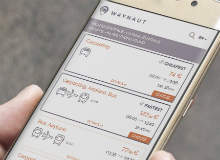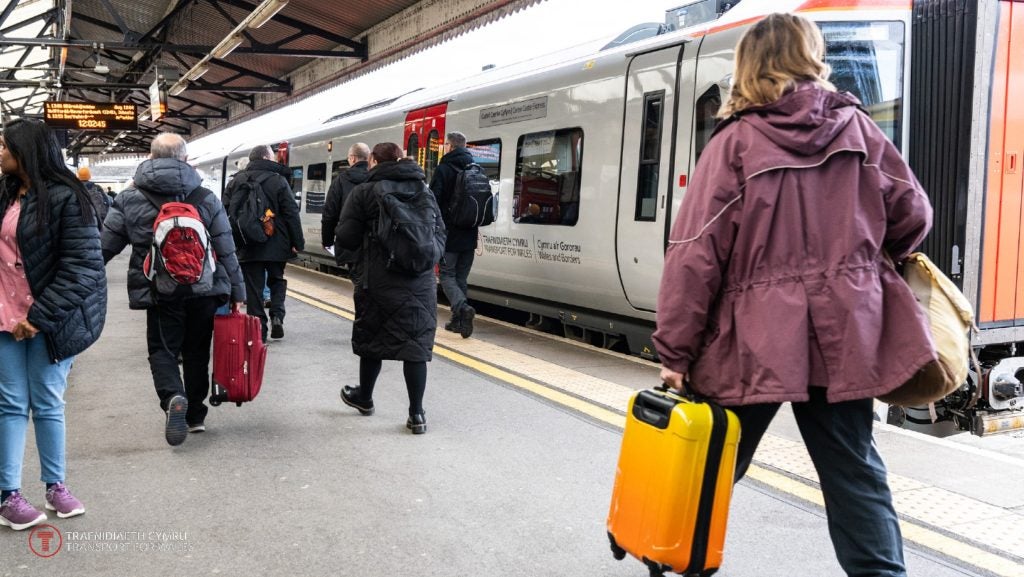
With a growing number of transport start-ups taking the world by storm, local, regional and international travel has become a much more fluid, versatile and personalised process for millions of travellers.
The founders behind online search platform Waynaut believe there has been a shift in how passengers, especially millenials, view and approach travelling, and many are more open to “innovative” solutions such as ridesharing and carsharing.
The selection and booking process has also moved online, with Euromonitor predicting mobile bookings to account for 25% of the total global online travel sales by 2019.
But despite a growing interest in intermodal transportation, arranging the cheapest and most convenient transfer between airports, railway stations, or bus and taxi services has so far required a large amount of co-ordination.
Waynaut has been quick to identify this gap in the market. Launching in February this year, the new platform brings all means of transport available under one search, prompting the user with the fastest, cheapest and most convenient options on their chosen route and then directing them on to the travel operator.
Eva Grey: Can you tell me what Waynaut is and how it works?
Simone Lini: Waynaut is a multimodal platform and our vision is to allow everyone in the world to travel seamlessly, combining every means of transport. Waynaut allows comparing every kind of means of transportation.
How well do you really know your competitors?
Access the most comprehensive Company Profiles on the market, powered by GlobalData. Save hours of research. Gain competitive edge.

Thank you!
Your download email will arrive shortly
Not ready to buy yet? Download a free sample
We are confident about the unique quality of our Company Profiles. However, we want you to make the most beneficial decision for your business, so we offer a free sample that you can download by submitting the below form
By GlobalDataThere are many options of getting where you need to be, so instead of spending a long time trying to find the perfect combination, we have a mathematical algorithm that can do that for you.
Our clients are online travel agencies. But any developer can access and use our API (application program interface), for free.
The way we make money is through partnerships with clients such as BlaBlaCar, Bus Barton or rail operating companies and every time a booking is made thanks to our search engine, we get paid. So the service for people choosing to use Waynaut is free.
EG: How did this idea start?
SL: The concept started a long time ago in Milan, when I was trying to build a company website similar to what BlaBlaCar is now. I won a scholarship at university and went to Silicon Valley in the US, to an entrepreneurship school. There I was told my idea sucked, which was true, because through that initial website, I wasn’t producing anything new.
When I came back to Italy, I thought, no one wakes up in the morning and wants to use carpooling; people want to find the best route, the fastest and the cheapest, comparing all means of transport. So I thought I’d put them all together.
I was working in Australia for e-commerce incubator Rocket Internet when I met the first co-founder. After I returned to Italy and raised the first grant from Telecom Italia, I started working on the idea together with four designers and two developers.
At the beginning, we were trying to build the “multimodal Expedia” but we soon realised that Expedia spend approximately $2.4bn per year in advertising, which is quite hard to compete with. So instead of having Expedia as a competitor, we thought: why not have companies like Expedia, Kayak and others as clients?
EG: How would you define the intermodal transport sector as it is today? Do you think it is accessible and easy to navigate?
SL: There is certainly room for improvement, and I’m happy about that because if it was easy, someone else would’ve already created this platform. Getting all the different data together is a challenge but we are more than happy to work on this challenge.
EG: So you spotted a gap in the market when it comes to intermodal transportation?
SL: That’s it. There is a gap in the market because while there are a lot of good players in the B2C area, on the B2B side we are just seeing the first start-ups now.
Multimodal is the future of travel, we’re seeing quite a few trends that indicate that. For example, searches for multimodal means of transport are growing about 20% year on year. Of course we want to be the ones that take advantage of this trend.
I believe this is going to be big and I hope that Waynaut is going to be one of the leaders. I’m sure that in the next two, three years you will be able to get around and book everything together in an even simpler way.
EG: What regions do you cover at the moment?
SL: Waynaut covers Europe and it includes carpooling, busses, flights, rail and ferries.
Right now, we are focused on getting more rail operators on board. This is quite hard because sometimes they are not familiar with the API model, with giving away their data. And they don’t realise that actually, by collaborating with us, it could get them many new customers who wouldn’t have otherwise considered the railways in their journey planning.
Sometimes, various local governmental and legal requirements make this process hard. Private companies are better because they recognise a business opportunity much faster and are better at finding ways to differentiate themselves from the competition, as opposed to public companies that often operate in a monopoly.
EG: Who is your target audience and who would benefit most from using Waynaut?
SL: The way it is now, Waynaut is created for millennials.
With new services like Uber and BlaBlaCar and other new means of transport, sometimes people are afraid to use them. Millenials are much more open to these innovations. But I do hope that as this becomes more mainstream, people will get used to this kind of means of transport.
EG: What is the next step for Waynaut?
SL: We are planning to expand our coverage. Right now, the technology is pretty solid, but coverage is not so great. There are some issues with railways and we are going to invest a lot of money in getting new suppliers on board.
At the moment, the platform is useful if you are planning to travel within Europe, or even to Africa, but we want to become the leader in multimodal transportation, and being a leader means having a global coverage. That’s our main goal.







